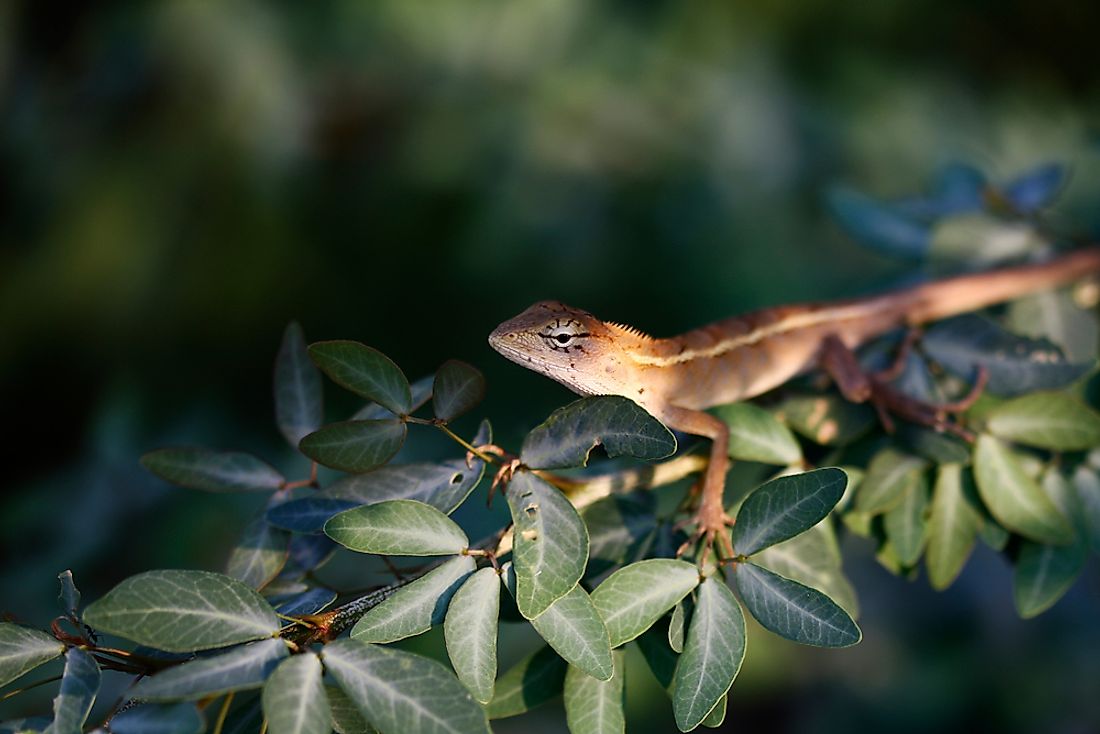Are Lizards Reptiles?

What Are Lizards?
Although reptiles may be commonly associated with snakes, turtles, and alligators, lizards are also a type of reptile. In fact, lizards are one of the most common reptiles around the world, with approximately 3,800 species that range in size from a few centimeters to about 3 meters long, such as the Komodo dragon that can feed on a water buffalo. Lizards typically have four legs, although some are legless and resemble a snake. They also have external ears which snakes do not have. Most lizards are quadrupedal, which enable them to move side to side, while others, like the chameleon, have a prehensile tail which aids in climbing trees.
Taxonomic Classification of Lizards
Lizards are a squamate reptile that has several other subfamilies. Reptiles belong to the class Reptilia, which is further divided into several other subclasses. One subclass is Eureptilia, which is then further subdivided into several orders including Sphenodontia, Crocodilia, and Squamata. Squamata is the largest order of reptiles, consisting of lizards and snakes, and is collectively referred to as scaled reptiles or squamates. The order has more than 10,000 species, which is the second-largest of extant vertebrates. Therefore, all lizards are reptiles, but not all reptiles are lizards. Lizards can be found in all continents of the world, except Antarctica and several Oceanic islands.
Characteristics That Make Lizards Reptiles
Lizards Are Cold-Blooded
Like most reptiles, lizards are cold-blooded, meaning that they are not able to generate heat internally and must rely on the surrounding environment to keep warm. Most lizards live in warm areas and often bask in the sun to get heat, and then retreat back into the shade to cool down. By moving in and out of the sunlight, reptiles attempt to keep their body temperature steady throughout the day. Lizards, and by extension all reptiles living in cold places, must hibernate to keep their bodies warm.
Their Bodies Are Covered with Scales
Lizards do not possess mucous glands on their bodies like amphibians, making their skin dry and scaly. The skin of lizards is covered with scales made of keratin which provide protection from the harsh surrounding and prevent water loss through evaporation. The ability to conserve water enables some types of lizards to survive in deserts and arid areas.
Lizards Reproduce by Laying Eggs
Like most reptiles, lizards are oviparous, meaning they lay eggs. Reproduction in lizards occurs by internal fertilization. Once fertilization takes place, the female lizard deposits the egg in a nest or on the ground. The size of the egg varies from 4-50% of the female’s body weight. Most eggs have a leathery shell which allows for the exchange of water. Some females abandon the eggs after laying them, while other species brood and protect the eggs. A few species of lizards are viviparous, meaning they have live births rather than laying eggs. However, unlike mammals, viviparous species do not lactate.
They Breathe Through Lungs
All reptiles breathe through lungs. Lizards have well-developed lungs that enable them to take in oxygen and expel other gases. They also possess a diaphragm, which allows for lung inflation during the breathing process. Some lizards exhibit unidirectional airflow, which allows air to move in a loop through the lung.







